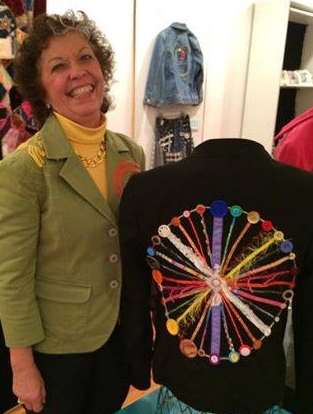Different by Design:
How to MOVE From
FEELING Defective to BEING Distinctive
Highly creative, acutely aware, super- sensitive, intense and/or gifted youth and adults, whom I like to call CASIGYs™, are often assumed to have an (unfair) advantage over others because of their higher observable abilities. Unfortunately however, it is not unusual for a CASIGY’s inner experience of life to stand in stark contrast to the privilege and advantage that they are rumored to be experiencing.
The characteristics that CASIGYs™ carry within them may be wonderful and also can cause great distress. Creativity and creative expression can fun but can also be a great burden. Creative ideas show up whether we have time to pay attention to them, or do anything with them or not. They also often arrive in tandem or multiples, and the creative person has to choose which idea gets to see the light of day.
Being aware of things that most people are not may lead to exciting AHA! moments. At the same time it can create questions of what’s real and what’s not when no one else sees what you’re seeing. It may also carve a canyon of separation between the acutely aware person and others who are less aware.
Likewise, sensitivity is a double edged sword. High sensitivity, also known as “overexcitabilities”, often brings a capacity  for depth of feeling and thought along with a high level of conscientiousness, compassion and empathy. On the other hand, when seemingly simple things like sounds, light and textures create a high level of distress, dealing with them can consume great time and energy, leaving less energy and time available for the rest of daily life.
for depth of feeling and thought along with a high level of conscientiousness, compassion and empathy. On the other hand, when seemingly simple things like sounds, light and textures create a high level of distress, dealing with them can consume great time and energy, leaving less energy and time available for the rest of daily life.
 for depth of feeling and thought along with a high level of conscientiousness, compassion and empathy. On the other hand, when seemingly simple things like sounds, light and textures create a high level of distress, dealing with them can consume great time and energy, leaving less energy and time available for the rest of daily life.
for depth of feeling and thought along with a high level of conscientiousness, compassion and empathy. On the other hand, when seemingly simple things like sounds, light and textures create a high level of distress, dealing with them can consume great time and energy, leaving less energy and time available for the rest of daily life.
When any of these are combined with high intelligence, each of these other traits are magnified and complicated. The more of these characteristics that a person carries, the more complex the interaction among these traits can become.
The cumulative effect is that many creative, sensitive, intelligent and/or gifted youth and adults feel like misfits, or as many have expressed, like aliens from a different planet. Although they may have learned to camouflage or try to hide it, they may carry within themselves a deep sense of inferiority and inadequacy, and may have concluded that they are defective in an irreparable way. For many, having an awareness of being profoundly different than others and then drawing a conclusion that “I’m defective” can come as young as ages 2-5 or even younger ─ at the very time that the foundations of the Self are being constructed. All too often this can evolve into a secret sense of alienation, and is often accompanied by anxiety, depression, anger, rage and a plethora of additional distressing emotional states. This eventually can lead to despair and deep discouragement.
Lorem ipsum dolor sit amet, consectetur adipiscing elit. Ut elit tellus, luctus nec ullamcorper mattis, pulvinar dapibus leo.
The result?
 Many CASIGYs™ dumb themselves down, underachieve, waste their potential, cop out or drop out. Or to the dismay of those who love and care about them, they may go down the spiraling path of deviancy or violence─ turning against themselves or others in episodes of bullying, self-harm, suicide, and even, chillingly, murder. Still others live, what appears from the outside, to be a normal, even a privileged life, all the while feeling alienated from humanity and deeply disappointed with their lives.
Many CASIGYs™ dumb themselves down, underachieve, waste their potential, cop out or drop out. Or to the dismay of those who love and care about them, they may go down the spiraling path of deviancy or violence─ turning against themselves or others in episodes of bullying, self-harm, suicide, and even, chillingly, murder. Still others live, what appears from the outside, to be a normal, even a privileged life, all the while feeling alienated from humanity and deeply disappointed with their lives.
Am I overstating this situation? Most CASIGYs™ succeed in their relationships, school and work. On the other hand, many accomplished students and adults have confessed to me that they often ask themselves, “What’s WRONG with ME?” They tell me how others have repeatedly asked them, “What’s WRONG with YOU ?” or treated them like something is wrong with them. Others have revealed to me how these questions connect to a deep sense of defectiveness that is often related to the difficulties of being more creative, more aware, more sensitive, more intense and/or more intelligent than are the vast majority of people. Many have lamented that they feel separated from most of the human race by these characteristics, and despair of finding a way to feel like they belong anywhere or at home on this planet.

We have dramatic, even shocking examples of this in Littleton, Colorado, USA, where both the Columbine Massacre and the Arapahoe High School shootings happened, and not far away, the Aurora theater shooting also occurred. Three of these four shooters have been identified as gifted students. Many other school shootings were also perpetrated by gifted students. Research has shown us that although the gifted do not have a higher (or lower) rate of violence, other crimes, mental illness or suicide than do the general population; the highly creative do.
Mary Lou Kelly Streznewski in her book, Gifted Grownups, the mixed blessing of extraordinary Potential identifies three types of gifted adults – Strivers, Superstars and Independents. Strivers are “the high-achieving teacher-pleasers” in school who have high test scores, high grades and high accomplishments. They often evolve into adults who consider their jobs their lives. Superstars are the one-third who make the rest of us look bad. Often all gifted people are expected to be like this. They are “taller, healthier, handsomer, wealthier, happier and nicer than most people….They are often the scholar athletes who seem to have it all. Whatever field they enter, they can be found in the same place: at the top.” Then there are what Streznewski calls the Independents. They “work hard, often brilliantly, at what interests them (italics mine). They may ignore the rest, regardless of the consequences. Their locus of control comes from deep in their inner value system. …..They tend not to fit into the neat little slots of our [academic or] corporate society. …. [here one may arrive] at the ultimate waste of the best and the brightest.”[i]
Here, I am speaking primarily to this third group of people, and others whom I like to call CASIGYs™.
CASIGYs are─
Creative,
Acutely Aware,
Super-Sensitive,
Intense, maybe
Gifted
You-s!
You may wonder what you, or your own special CASIGY™ can do to rescue yourself, him- or herself from this sense of inferiority, inadequacy and defectiveness, so you or they can instead, recognize your or their distinctiveness and make the creative contribution for which you or they are uniquely prepared.
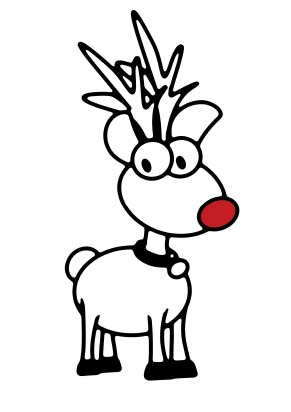
CASIGYs have Mascots! Schools, sports teams and many companies have mascots, Why not creative, sensitive and gifted people? Our mascots are four legged furry creatures who have been through similar challenges, and who have come through them well. Meet Casi and Siggy, niece and nephew of the famous, even legendary Four-Legged-One-with-Antlers-and-a-Red-Nose, who may be just a little bit familiar.
Casi and Siggy also had red noses, and because of these differences─ their red noses─ our mascots and heroes rolled into one, were also ridiculed, excluded, ostracized, and eventually banished into exile. Later, thy too, returned from exile when their ‘defects’ were recognized as their greatest assets ─ and ones that could help solve an important community problem.
It can be important for a CASIGY and those who care about them to understand how, like our red-nosed mascot-heros, a CASIGY™ can cope, heal and transform their perceived deep defects into their greatest gifts which, in the end, will enable them to make a unique, creative contribution to the world.
But how do you do that?
By first, last and always, understanding that
YOU’RE NOT DEFECTIVE; YOU’RE DIFFERENT BY DESIGN!
And what is it that makes this inner shift in perception and experience possible? Let’s look a little closer.
Our mascot-heroes’ story first illustrates the
CASIGY’s Cycle of Discouragement
Phase 1 of this cycle, “Living With a Red Nose” occurs when a CASIGY™ becomes aware s/he is 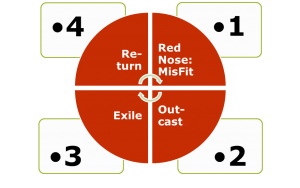 invisibly, yet inexorably different than most people. The Red Nose Phase can also occur when a CASIGY experiences negative judgement, criticism, being excluded or ostracized for her traits of creativity, awareness, sensitivity, intensity, and/or intelligence. When this happens, it commonly brings in its wake struggles with social relationships, school and work performance and dissatisfaction, and under-achievement, just to name a few. In addition, the psychological most problems commonly faced by CASIGYs™, such as Sensitivity, Anxiety and Depression are usually made worse by entering the Red Nose/MisFit Phase.
invisibly, yet inexorably different than most people. The Red Nose Phase can also occur when a CASIGY experiences negative judgement, criticism, being excluded or ostracized for her traits of creativity, awareness, sensitivity, intensity, and/or intelligence. When this happens, it commonly brings in its wake struggles with social relationships, school and work performance and dissatisfaction, and under-achievement, just to name a few. In addition, the psychological most problems commonly faced by CASIGYs™, such as Sensitivity, Anxiety and Depression are usually made worse by entering the Red Nose/MisFit Phase.
 invisibly, yet inexorably different than most people. The Red Nose Phase can also occur when a CASIGY experiences negative judgement, criticism, being excluded or ostracized for her traits of creativity, awareness, sensitivity, intensity, and/or intelligence. When this happens, it commonly brings in its wake struggles with social relationships, school and work performance and dissatisfaction, and under-achievement, just to name a few. In addition, the psychological most problems commonly faced by CASIGYs™, such as Sensitivity, Anxiety and Depression are usually made worse by entering the Red Nose/MisFit Phase.
invisibly, yet inexorably different than most people. The Red Nose Phase can also occur when a CASIGY experiences negative judgement, criticism, being excluded or ostracized for her traits of creativity, awareness, sensitivity, intensity, and/or intelligence. When this happens, it commonly brings in its wake struggles with social relationships, school and work performance and dissatisfaction, and under-achievement, just to name a few. In addition, the psychological most problems commonly faced by CASIGYs™, such as Sensitivity, Anxiety and Depression are usually made worse by entering the Red Nose/MisFit Phase.
Phase 2 “Being an Outcaste” is when a CASIGY™ slides into becoming an outcaste and is, or feels like they are, no longer part of normal society. In the legend, this happened to our mascot/hero when the exclusions became habitually entrenched. In real life, it is often an interactive process in which the exclusion becomes embedded in the interactive patterns within a group. In addition, a CASIGY may also make the psychic move into being an Outcaste as a means of self-defense. Many other sources have focused on the educational system and the culture as culprits in producing this phenomenon and on changes that need to occur at that level. These are important, even necessary considerations. However, here we will focus on the inner psychological process that happens as a CASIGY™ lives in, and some CASIGYs live out their entire lives as outcastes. The ideal, of course is to move completely through the cycles of Discouragement and Encouragement.
Phase 3 in the legend is Banishment into Exile. Exile for the CASIGY is often the experience of being lost and wandering in the wilderness of despair with no map and awareness of a way out. There may be hopelessness that one can ever be ‘normal’, whatever that is, and therefore may never belong anywhere. There may be despondency that one will ever find a way to like or feel good about oneself. There may be a sense of disconnection from others and alienation, both from society and from oneself, and despair over ever being able to have satisfying meaningful or intimate relationships. There can be a feeling of letting oneself down, and not fulfilling one’s potential, and a deep despair of ever being able to do so. Many CASIGYs endure the experience of exile for years, even decades of their lives, and may extract from it “proof” of their inferiority, inadequacy and defectiveness.
The experience of being in exile can be similar to what Kazimierz Dabrowski called Positive Disintegration, ancient Alchemy calls dismemberment, and what St John of the Cross called the Dark Night Of The Soul. A beautiful illustration of this is the life cycle of the butterfly, in which a creature starts out as a caterpillar, crawling around on the ground and on various foliage. Unless one knows about its whole life cycle, it would be “just” a caterpillar. But then one day, it enters exile; that is it spins a cocoon and hides itself away from the world. The cocoon stage of its development produces an actual disintegration to a liquid state before the transformation into a butterfly is possible, let alone complete.
 On the other hand, I’ve found that Exile is Essential.
On the other hand, I’ve found that Exile is Essential.
The experience of being in exile can be similar to what Kazimierz Dabrowski called Positive Disintegration, ancient Alchemy calls dismemberment, and what St John of the Cross called the Dark Night Of The Soul. A beautiful illustration of this is the life cycle of the butterfly, in which a creature starts out as a caterpillar, crawling around on the ground and on various foliage. Unless one knows about its whole life cycle, it would be “just” a caterpillar. But then one day, it enters exile; that is it spins a cocoon and hides itself away from the world. The cocoon stage of its development produces an actual disintegration to a liquid state before the transformation into a butterfly is possible, let alone complete.
Just as this cocoon phase is where the caterpillar transforms into a butterfly, the psychological experience of being in exile is often essential in order for a CASIGY to reach the deeper and higher multi-level personal development of which Dabrowski says many gifted and talented people are capable. Carl Jung describes this higher and deeper personal development as Individuation. Sadly, some people live out their lives in exile. Gladly, many others do seem to be impelled from within and often also from ‘without’ to return from exile. If you or someone you love is a CASIGY longing to return from exile, I trust that you will find hope and help here.
Phase 4 is the return from exile. In the legend, our mascot-hero was remembered and brought back into the community when it was realized that his “deep defect” was actually an asset which was urgently needed in the community. His red nose provided the light in the night and the guidance system through the fog so he could ‘save the day’ for everyone. A CASIGY’s return from exile is similar to his in that what was once considered to be a deep defect is finally recognized as a great gift that is needed in the community. It is also often different in that the return for a human is often not quite this simple or dramatic, and one may not ‘save the day’ for everyone. But it is enough to save our own day by finding a way to make a creative contribution to our own community.
Returning from Exile, when it happens, occurs in the context of what Joseph Campbell calls the Hero’s (or, I would add, the Heroine’s) Journey and with what the ancients described as an initiation. As already mentioned, it also connects with Dabrowski’s Positive Disintegration and Multilevel Development, which posits that we disintegrate in order to reintegrate at a higher level. There are many pitfalls along the pathway of return from exile. Because of them, many CASIGYs falter and never complete their return from exile. However, it is possible for a CASIGY™ to successfully navigate these pitfalls in order to complete the pilgrimage back from exile. Let’s take a closer look:
Finally, We Get to the CASIGY’s Cycle of Encouragement.
Our mascot with his Red Nose passed through each of these phases, and he has much to show CASIGYs about how navigate the difficulties, so as to not only survive the journey, but to come out thriving on the other side.
Finally, We Get to the CASIGY’s Cycle of Encouragement.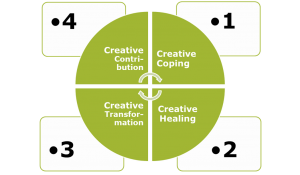
Our mascot with his Red Nose passed through each of these phases, and he has much to show CASIGYs about how navigate the difficulties, so as to not only survive the journey, but to come out thriving on the other side.
Phase 1 is that of learning and using Creative Coping skills which can help a CASIGY to survive being ostracized and excluded, among other things. Coping creatively may include identifying one’s default coping skills, and developing useful, helpful coping skills and decreasing the use of non-productive, even destructive ones.
Creative Coping Tools can help CASIGYs™ to cope with the Cycle of Discouragement and also to move into and through the Cycle of Encouragement. Creative Coping Tools are essential to sustaining CASIGYs™ as face ridicule, exclusion, being an outcaste, being banished, and as they travel through all of the phases of both of these cycles. Some examples of Creative Coping skills can be found in my article, “CASIGYs’ Top Ten Tools to Help With Sensitivity, Anxiety and Depression.” You can get your copy of this free Special Report by clicking here.
 Phase 2 is experiencing Creative Healing for the emotional wounds that are a natural result of a CASIGY being so different, and of being excluded, ostracized and/or banished into exile. Many CASIGYs have spoken to me of feeling defective or broken as human beings. I feel strongly that these words reveal a cultural (not necessarily personal) mechanical mindset, and offer the concept of wounding instead. Humans are not machines, but are living creatures. Wounds can heal, and when they do so, they often leave behind a stronger organism than existed prior to the wounding. Wound healing is also a normal process, both physically and psychically, and once we understand this process of natural healing, we can get out of its way, and even facilitate it. Wounding and wound healing can also help us understand residual psychic scar tissue and learn how to deal with it compassionately and effectively, both with ourselves and with others.
Phase 2 is experiencing Creative Healing for the emotional wounds that are a natural result of a CASIGY being so different, and of being excluded, ostracized and/or banished into exile. Many CASIGYs have spoken to me of feeling defective or broken as human beings. I feel strongly that these words reveal a cultural (not necessarily personal) mechanical mindset, and offer the concept of wounding instead. Humans are not machines, but are living creatures. Wounds can heal, and when they do so, they often leave behind a stronger organism than existed prior to the wounding. Wound healing is also a normal process, both physically and psychically, and once we understand this process of natural healing, we can get out of its way, and even facilitate it. Wounding and wound healing can also help us understand residual psychic scar tissue and learn how to deal with it compassionately and effectively, both with ourselves and with others.
Phase 3 is suffering the Creative Transformation that may occur while a CASIGY is in exile. Yes, we suffer  transformation. A caterpillar that spins a cocoon dissolves into a liquid before transforming into a butterfly. It must sacrifice itself as a caterpillar so that it can transform. We humans and especially CASIGYs also must give up much in order to transform personally. Goodbye must be said to the familiarity of the wilderness. Goodbye must be said to the comfortable, yet unhelpful or even destructive coping habits that may have been formed in the cycle of Discouragement. It is also not easy for anyone to learn new skills, and it’s especially difficult for a CASIGY to tolerate the mental, emotional and often physical discomfort of being a beginner.
transformation. A caterpillar that spins a cocoon dissolves into a liquid before transforming into a butterfly. It must sacrifice itself as a caterpillar so that it can transform. We humans and especially CASIGYs also must give up much in order to transform personally. Goodbye must be said to the familiarity of the wilderness. Goodbye must be said to the comfortable, yet unhelpful or even destructive coping habits that may have been formed in the cycle of Discouragement. It is also not easy for anyone to learn new skills, and it’s especially difficult for a CASIGY to tolerate the mental, emotional and often physical discomfort of being a beginner.
 transformation. A caterpillar that spins a cocoon dissolves into a liquid before transforming into a butterfly. It must sacrifice itself as a caterpillar so that it can transform. We humans and especially CASIGYs also must give up much in order to transform personally. Goodbye must be said to the familiarity of the wilderness. Goodbye must be said to the comfortable, yet unhelpful or even destructive coping habits that may have been formed in the cycle of Discouragement. It is also not easy for anyone to learn new skills, and it’s especially difficult for a CASIGY to tolerate the mental, emotional and often physical discomfort of being a beginner.
transformation. A caterpillar that spins a cocoon dissolves into a liquid before transforming into a butterfly. It must sacrifice itself as a caterpillar so that it can transform. We humans and especially CASIGYs also must give up much in order to transform personally. Goodbye must be said to the familiarity of the wilderness. Goodbye must be said to the comfortable, yet unhelpful or even destructive coping habits that may have been formed in the cycle of Discouragement. It is also not easy for anyone to learn new skills, and it’s especially difficult for a CASIGY to tolerate the mental, emotional and often physical discomfort of being a beginner.
How can it be that exile is essential to Creative Transformation? This trek into and through the deep wilderness of inner territory is what can transform a CASIGY’s™ self-esteem and identity from one of feeling defective to that of owning and celebrating his distinctiveness. In this wilderness, a CASIGY may experience the solitude necessary to hear his Inner Voice, and to activate his own Inner Magician, who is the one who can activate this inner transformation. But sadly, not everyone who is in exile has the desire, the need or the capacity to return from exile, and tolerate the tension between the opposites of where he is and where he wants to go. But then again, some do, and many who have spent time in exile are in fact, desperate to find a way to Return from Exile.
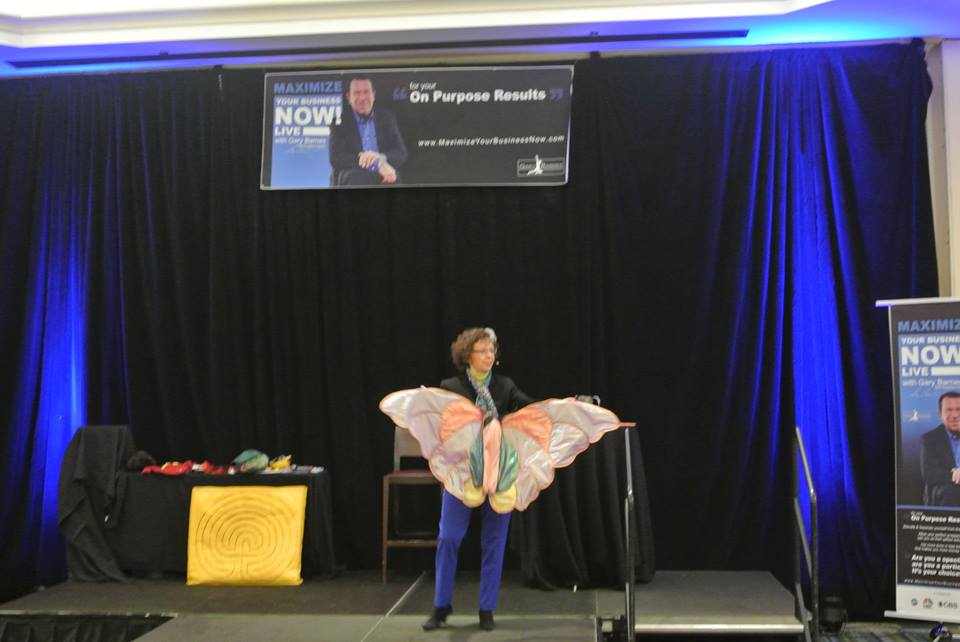 Phase 4 involves the deep inner recognition that a CASIGY’s “deep defect” is now understood as one’s greatest gift. The CASIGY is also able to mobilize her resources to use this gift to make a creative contribution to the community. A CASIGYs™’ differences, the things which have created so much trouble for so many of them, are now revealed as no longer being an indictment of inferiority, inadequacy or defectiveness. Instead they constitute an Invitation to Adventure and to the Self-Development necessary in order to discover one’s true distinctiveness, which leads to true accomplishment─ that which is a soulful fulfillment of each CASIGYs™’ positive purpose for being on this planet – the ancient concept of the Alchemical Opus.
Phase 4 involves the deep inner recognition that a CASIGY’s “deep defect” is now understood as one’s greatest gift. The CASIGY is also able to mobilize her resources to use this gift to make a creative contribution to the community. A CASIGYs™’ differences, the things which have created so much trouble for so many of them, are now revealed as no longer being an indictment of inferiority, inadequacy or defectiveness. Instead they constitute an Invitation to Adventure and to the Self-Development necessary in order to discover one’s true distinctiveness, which leads to true accomplishment─ that which is a soulful fulfillment of each CASIGYs™’ positive purpose for being on this planet – the ancient concept of the Alchemical Opus.
This is the stuff of story, myth and fairy tale, of life at the very personal and also the universal, archetypal level. It is also the stuff of good research and analysis. This article is an overview and an introduction to the themes that I’ll be developing further in my upcoming book, Different by Design: From Feeling Defective to Being Distinctive. In it, I’ll include insights from both types of thinking and both worlds. I will also include understandings from the fields of creativity, high sensitivity, giftedness and psychology as we together explore Different by Design: From Feeling Defective to Being Distinctive.
If you’re interested in updates on this project, you can let me know here:
[i] (Streznewski, 1999) Gifted Grownups

